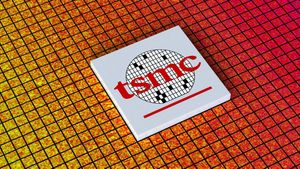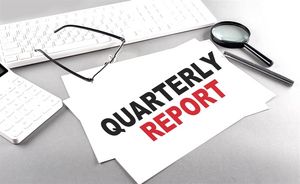-- Originally posted on: https://resources.rework.com/libraries/productivity/meta-productivity-system
With the change of the economic landscape, productivity thinking has evolved dramatically – from the industrial drive for output at all costs to the optimization of knowledge and systems. And today, it's about the fluid, human-centered world of work.
Understanding how to increase productivity in today's workplace requires a comprehensive understanding of the current situation, and then an all-around approach.
 Where we are now: The Empathy era
Where we are now: The Empathy era
We once worked in a world designed for stability, where markets moved slowly, business models changed gradually, and hierarchies provided clarity. But everything has shifted so fast within a few couple of years.
COVID-19 has forced the digital transformation of work to accelerate to adapt to the remote work setting. Every job, team, and organization is integrated with technology, and now artificial intelligence. But along with that, businesses have to rethink the team dynamics and how their organization is structured.
Meanwhile, the layoff wave is hitting all kinds of industries, cutting down hundreds of thousands of jobs. As a result, employees are now re-evaluating what they want from work, seeking greater flexibility, purpose, and psychological safety.
In today's workplace, output alone no longer motivates. Employees want to know why their work matters and how it connects to something larger than a task list. When people understand the purpose behind their work, they're more resilient, more creative, and more consistent in their execution.
All of this has led to the emergence of a new era we can now call the Empathy Era of productivity, where productivity depends less on rules and routines, and more on meaning and adaptability.
The Empathy Era doesn't discard the lessons of the past. It builds on them. Peter Drucker's call to "do the right things" still rings true. But now, doing the right things also means designing systems that protect focus, foster trust, and adapt quickly to change.
Why "productivity tips" don’t work
If you’ve ever tried a list of “top 10 productivity hacks,” you’re not alone – and you’re also probably not more productive.
That’s because most productivity tips only address the surface: how to squeeze more tasks into the same amount of time. You end up busier, not better. More efficient, but not more effective. These tactics lack a foundation. They tell you what to do, but not why to do it or whether it matters in the first place. In the end, you fall back into the productivity traps.
To truly increase productivity, you need more than scattered advice. You need a structure that connects your purpose, your focus, and your follow-through. That leads us to the foundation of a meta-productivity system, an all-rounded approach to boost your productivity in the modern workplace.
The Meta-Productivity system to increase productivity
The meta-productivity system integrates three critical needs:
- The why – to provide meaning and direction
- The what – to translate that purpose into action
- The how – to create flow, feedback, and focus
At its core, the system is built around four simple and repeatable components that work together to guide both individuals and teams through modern work challenges, and show you how to be actually productive.
 1. Start with purpose: The first step to be productive
1. Start with purpose: The first step to be productive
Before we can aim for goals, we need a reason to care. Without a clear sense of purpose, it’s nearly impossible to increase productivity over time because your actions lack strategic direction.
Purpose sits above any target – it's the compass that shows us which direction matters. It's not about chasing what seems "right" on the surface, but about aligning with something, "The One Thing" that reflects our deeper values, personally and in business.
For teams, this answers how to motivate staff to increase productivity—people perform better when they understand why their work matters, not just what tasks to complete.
2. Set tiered goals and metrics to increase productivity with clarity
Having a purpose is powerful, but it's not enough. Without a clear structure, in this fast-moving world, even the best intentions can get lost.
That’s where tiered goals come in to help us turn purpose into action. By breaking big ideas into smaller, focused steps, we stay grounded and aligned, whether we’re working solo or in a team.
Frameworks like Goal Setting to the Now, OKRs (Objectives and Key Results) and SMART goals can be especially helpful here. They give us a way to connect our daily actions to broader outcomes, while keeping space for learning and change.
3. Practice disciplined execution (and disciplined breaks)
No goals is meaningful without proper execution, but every sustainable execution requires routines that protect focus and boundaries that support recovery.
To support this balance, combining the Getting Things Done (GTD) method and the Flow framework will help you design your own daily rhythm, where deep work and real rest can both thrive.
4. Measure what matters & Build on continuous improvement
Activity is no longer a reliable signal of performance - you need a combination of volume, outcome, and quality metrics (as we have discussed previously). Once again, you can refer to the OKR model at this stage, but more than just setting the objectives and key results, you can benefit from their check-in ritual. These small moments of reflection help teams stay on track, course-correct, and keep learning as they go.
Final thoughts
The meta-productivity system is designed for the way we work today. It keeps purpose at the center, which makes focus easier, while encouraging the iterative learning that allows us to adapt to the changing world.
And most importantly, it's scalable. Whether you're an individual contributor learning how to be productive or a leader focused on how to increase productivity in the workplace, the same core structure applies, so you can be consistently productive across layers.
However, this framework won’t fix everything. No amount of personal discipline can overcome a broken system. It won’t solve poor leadership, toxic culture, or constant strategic pivots. That’s why the meta-productivity system must be supported by structured processes and team alignment. Productivity isn’t an individual sport. It’s a shared system.
Contact Info:
Name: Rework
Email: Send Email
Organization: Rework
Website: https://rework.com/
Release ID: 89166914
Should any errors, concerns, or inconsistencies arise from the content provided in this press release that require attention or if a press release needs to be taken down, we kindly request that you immediately contact us at error@releasecontact.com (it is important to note that this email is the authorized channel for such matters, sending multiple emails to multiple addresses does not necessarily help expedite your request). Our efficient team will be at your disposal for timely assistance within 8 hours – taking necessary measures to rectify identified issues or providing guidance on the removal process. We prioritize delivering accurate and reliable information.






